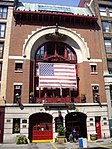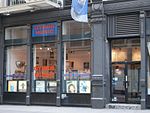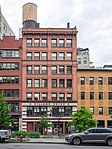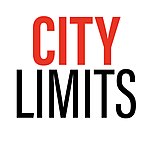Merchant's House Museum
1936 establishments in New York CityFederal architecture in New York (state)Greenwich VillageHistoric American Buildings Survey in New York CityHistoric house museums in New York City ... and 9 more
Houses completed in 1832Houses in ManhattanHouses on the National Register of Historic Places in ManhattanMuseums established in 1936Museums in ManhattanNational Historic Landmarks in ManhattanNew York City Designated Landmarks in ManhattanNew York City interior landmarksUse mdy dates from May 2019

The Merchant's House Museum, known formerly as the Old Merchant's House and as the Seabury Tredwell House, is the only nineteenth-century family home in New York City preserved intact—both inside and out. Built "on speculation" in 1832 by Joseph Brewster, a hatter by trade, it is located at 29 East Fourth Street, between Lafayette Street and the Bowery in Manhattan. It became a museum in 1936, founded by George Chapman, a cousin of the family who once lived there. The House was among the first 20 buildings designated in 1965 under the City's new landmarks law. It is the only historic house museum in the Greenwich Village/Soho/NoHo neighborhoods.
Excerpt from the Wikipedia article Merchant's House Museum (License: CC BY-SA 3.0, Authors, Images).Merchant's House Museum
East 4th Street, New York Manhattan
Geographical coordinates (GPS) Address External links Nearby Places Show on map
Geographical coordinates (GPS)
| Latitude | Longitude |
|---|---|
| N 40.727666666667 ° | E -73.992361111111 ° |
Address
Merchant's House Museum
East 4th Street 29
10003 New York, Manhattan
New York, United States
Open on Google Maps




